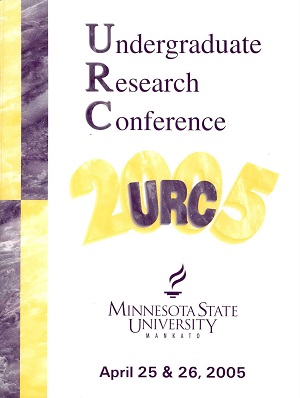Gendered Construction of the Female Identity
Location
CSU 244
Start Date
25-4-2005 10:30 AM
End Date
25-4-2005 12:00 PM
Student's Major
Communication Studies
Student's College
Arts and Humanities
Mentor's Name
James Dimock
Mentor's Department
Communication Studies
Mentor's College
Arts and Humanities
Second Mentor's Department
Communication Studies
Description
Since Garfinkle's ground-breaking work on labeling in the 1950's, the link between identity formation, specifically as constructed by extemal social messages intentionally directed by authority, and resultant behaviors has been well established. This research has extended upon this assumption, applying critical media and rhetorical methods to advertising aimed at adolescents, a particularly vulnerable grpup at a point of transition and identity formation. The adolescent negotiation of the transition from childhood (child identity) to adulthood (adult identity), has always been a uniquely critical stage of development. Moreover, the research has indicated that adolescents are particularly susceptible to influence by those in positions of authority. This research, relying in part upon Raven and French's concept of referential power (or a form of authority based upon the subject's selfidentification with the authority), demonstrated that advertising directed at adolescents has exerted a significant amount of authority. Print media aimed at adolescents was evaluated from a critical perspective. The research examined the underlying identity messages within various texts, specifically the construction of gender and sexuality. The ideological homogeneity of the marketplace, which has been dominated by sexist (not exclusively male but conceding supremacy of the masculine perspective) and capitalistic exploitation, commoditizes the female identity. The research has articulated implications of this rhetorical practice included, but were not limited to sexual violence, low self-esteem and self-objectification.
Gendered Construction of the Female Identity
CSU 244
Since Garfinkle's ground-breaking work on labeling in the 1950's, the link between identity formation, specifically as constructed by extemal social messages intentionally directed by authority, and resultant behaviors has been well established. This research has extended upon this assumption, applying critical media and rhetorical methods to advertising aimed at adolescents, a particularly vulnerable grpup at a point of transition and identity formation. The adolescent negotiation of the transition from childhood (child identity) to adulthood (adult identity), has always been a uniquely critical stage of development. Moreover, the research has indicated that adolescents are particularly susceptible to influence by those in positions of authority. This research, relying in part upon Raven and French's concept of referential power (or a form of authority based upon the subject's selfidentification with the authority), demonstrated that advertising directed at adolescents has exerted a significant amount of authority. Print media aimed at adolescents was evaluated from a critical perspective. The research examined the underlying identity messages within various texts, specifically the construction of gender and sexuality. The ideological homogeneity of the marketplace, which has been dominated by sexist (not exclusively male but conceding supremacy of the masculine perspective) and capitalistic exploitation, commoditizes the female identity. The research has articulated implications of this rhetorical practice included, but were not limited to sexual violence, low self-esteem and self-objectification.
Recommended Citation
Lemley, Julie. "Gendered Construction of the Female Identity." Undergraduate Research Symposium, Mankato, MN, April 25, 2005.
https://cornerstone.lib.mnsu.edu/urs/2005/oral-session-C/2



